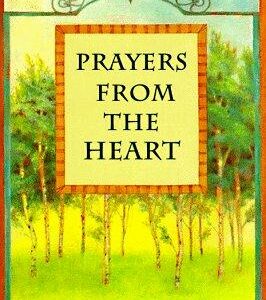Abraham Lincoln
$26.50
| Title | Range | Discount |
|---|---|---|
| Trade Discount | 5 + | 25% |
- Description
- Additional information
Description
In 1890 Abraham Lincoln’s two main White House secretaries, John G. Nicolay and John Hay, published the ten-volume biography Abraham Lincoln: A History. Although the authors witnessed the daily events occurring within the executive mansion and the national Capitol, their lengthy biography is more a recounting of the Civil War era than a study of Lincoln’s life.
Editor Michael Burlingame sifted through the original forty-seven-hundred-page work and selected only the personal observations of the secretaries during the Lincoln presidency, placing ten excerpts in chronological order in Abraham Lincoln: The Observations of John G. Nicolay and John Hay. The result is an important collection of Nicolay and Hay’s interpretations of Lincoln’s character, actions, and reputation, framed by Burlingame’s compelling preface, introduction, chapter introductions, and notes. The volume provides vivid descriptions of such events as Election Day in 1860, the crisis at Fort Sumter, the first major battle of the war at Bull Run, and Lincoln’s relationship with Edwin Stanton and George McClellan.
In this clear and captivating new work, Burlingame has made key portions of Nicolay and Hay’s immense biography available to a wide audience of today’s readers.
Editor Michael Burlingame sifted through the original forty-seven-hundred-page work and selected only the personal observations of the secretaries during the Lincoln presidency, placing ten excerpts in chronological order in Abraham Lincoln: The Observations of John G. Nicolay and John Hay. The result is an important collection of Nicolay and Hay’s interpretations of Lincoln’s character, actions, and reputation, framed by Burlingame’s compelling preface, introduction, chapter introductions, and notes. The volume provides vivid descriptions of such events as Election Day in 1860, the crisis at Fort Sumter, the first major battle of the war at Bull Run, and Lincoln’s relationship with Edwin Stanton and George McClellan.
In this clear and captivating new work, Burlingame has made key portions of Nicolay and Hay’s immense biography available to a wide audience of today’s readers.
Editor Michael Burlingame sifted through the the ten-volume biography Abraham Lincoln: A History and selected only the personal observations of the secretaries during the Lincoln presidency. The result is an important collection of Nicolay and Hay’s interpretations of Lincoln’s character, actions, and reputation.
“The introduction is excellent, the annotations enlightening, and the text selections judicious and valuable.”—Allen C. Guelzo, author of Lincoln’s Emancipation Proclamation: The End of Slavery in America and Abraham Lincoln: Redeemer President
Michael Burlingame, Sadowski Professor of History Emeritus at Connecticut College, is the author of The Inner World of Abraham Lincoln and the editor of eleven books about Lincoln, including An Oral History of Abraham Lincoln: John G. Nicolay’s Interviews and Essays, winner of the Abraham Lincoln Association Prize. He won the prestigious Lincoln Prize, honorable mention, for his five edited collections of letters, memoranda, editorial essays, lectures, and interviews by Lincoln’s White House private secretaries, John G. Nicolay and John Hay, all published by Southern Illinois University Press.
Reviewed for H-CivWar by Richard Hall, Department of History, Auburn UniversitySeparating the Lincoln from the Chaff: The Value of PerspectiveNo figure in American history–and few, if any, in history overall–have been written about and analyzed more than Abraham Lincoln. His lionization began as early as the hours after his assassination in 1865. One of the earliest monographs on the President, his life, and the war which came to define his term in office, was the ten-volume Abraham Lincoln: A History written by Lincoln’s White House secretaries John G. Nicolay and John Hay in 1886.Heavily criticized at the time of its initial publication, the work was as much a political biography of the war years as of Lincoln himself. In Abraham Lincoln: The Observations of John G. Nicolay and John Hay, noted historian Michael Burlingame has waded through the volumes of commentary and tangential histories to present future students of the Civil War era with a more concise portrait of the President through the eyes of those who were closest to him.As the Sadowski Professor of History Emeritus at Connecticut College and previous winner of the Lincoln Prize, Michael Burlingame has dedicated a great deal of time and research into these, and other, primary sources of the Lincoln Administration. In this monograph, he utilizes those volumes concerned with the President’s first two years in office, from his election in 1860 through the final firing of Gen.George McClellan in late 1862. Prior to the text-proper, however, is an introduction that is "a slightly altered form" of an essay on the Nicolay-Hay biography which the editor wrote nearly ten years ago (p.x). That introduction provides an objective, even-handed account of the original history written by Nicolay and Hay. Here, Burlingame points out the myriad problems with the original work, aside from its massive length. Among these are primarily blatant slants to the historical account, one that both lionizes Lincoln and appeases Lincoln’s son Robert, who was important to the men’s access to the President’s papers.Burlingame points out many criticisms made at the time that the original History was written, and that remain problematic for any who wish to navigate the work as a whole: a clear pro-Republican/anti-South agenda; the refusal by the original authors to see their subject for his flaws as well as his strengths; and, numerous and lengthy tangents from the titled subject. From Burlingame’s account, it would appear that what Nicolay and Hay actually produced was more a political history of the Civil War period rather than a simple biography of one man. Despite these flaws, however, Burlingame mentions that there were many contemporaries who applauded the original work, and that–prior to the official release of the President’s papers many decades after his death–the original Nicolay/Hay work was a vitally important source for Lincoln/Civil War scholars.Within the text itself, Burlingame shifts the original work to its proper place in history: as a primary source of first-hand observations. Along with quotes and excerpts from Nicolay and Hay’s _History_, Burlingame inserts a myriad of sources ranging from newspaper accounts to other journal, diary, and letter accounts.Utilizing Nicolay and Hay in this way, and therefore showing the reader that obvious biases are inherent in those observations, proper historical analysis can be implemented on the notes, diaries, journals, and letters of these two eyewitnesses to one of American history’s defining periods. From the first chapter, the insights of Nicolay and Hay provide a familiar portrait of Lincoln: one of a gracious winner, intent on securing party cohesion through Cabinet appointments as early as election night itself, while shortly thereafter finding the patronage of Washington politics distasteful. Burlingame’s style in weaving together the observations of these two men never distracts from the flow of the narrative.Along with the aforementioned observations, Burlingame has also provided detailed accounts from these men on their observations of the events that led to war: secession, Fort Sumter, the amassing of the Army of the Potomac, and a scathing account of the generalship of George B. McClellan. Throughout these events, Lincoln rises above the fray as the voice of wisdom and leadership, while detractors such as McClellan are treated as little more than political-and-mental inferiors. It does not take long into the text to see the clear bias of Nicolay and Hay. Luckily for the reader, these biases are subdued somewhat by the expert editing of Burlingame with additional primary and secondary analyses of events. Burlingame, in fact, ends most chapters with a lengthy excerpt from the original Nicolay/Hay History.These excerpts, preceded as they are by other sources, lend credence to the observations of these men that their flowery epoch on its own may have lost. As such, the original work regains importance in historical analysis.The only major criticism that one could make of the overall work is its brevity. With the exception of a concluding chapter on the post-assassination "fame" of the President, the book itself really ends in December of 1862, hardly a high-point in the Lincoln administration.By the time the reader has reached the end, wading through both primary and secondary accounts of the President’s first two years in office, the ride abruptly stops. What the work most desperately needs is completion. If a second volume is not forthcoming, then this volume should have seen its topic through to its logical conclusion. If a second volume is planned, readers should be promised as much. Even within the pages of this monograph, room for expansion and/or additional topics is clear.That said, Abraham Lincoln: The Observations of John G. Nicolay and John Hay should be marked as a valuable addition to Lincoln studies.The original 1886 work may have long since been disregarded for its overt biases. Yet the author has substantiated the original work–and, on occasion, provided alternate interpretations–using additional primary sources and more recent secondary analyses. Burlingame’s masterly editing has transformed the original "history" written by Nicolay and Hay to the more appropriate status of a primary document–alongside the very letters, journals, diaries, and memos from which the original history was conceived.
In 1974 Lincoln scholar Roy P. Basler described himself “As, I suspect, one of the few people yet alive who once read Nicolay and Hay complete…” That is a claim that not very many could make today as well. The ten volume Abraham Lincoln: A History is over 4,700 pages long. It was written with reverence towards the Great Emancipator by his two principal secretaries John G. Nicolay and John Hay. Unfortunately, by modern standards the work fails as a biography. It is an odd combination of the history of the times and biography. Abraham Lincoln disappears for long stretches of the text. His early life is given only cursory treatment in the first volume. This section was also subject to censorship from Robert Todd Lincoln who controlled access to Lincoln’s papers. He let the secretaries use them, but struck out sections of text that he felt were undignified. The opening of the Lincoln Papers in 1947 and the publication of The Collected Works of Abraham Lincoln served to make Hay’s and Nicolay’s work less important as a historical work. But perhaps not totally unimportant. Lincoln historian Michael Burlingame has sifted through the work to pull out a sample of the most revealing parts of the biography and made them accessible in his Abraham Lincoln: The Observations of John G. Nicolay and John Hay. Burlingame’s Nicolay and Hay credentials are impeccable. This is the sixth volume he has produced on the duo. He has edited editions of their diaries, letters, newspaper articles, and interviews. This book is a fitting capstone to his efforts. Like his previous volumes Burlingame provides excellent notes and annotations. He also provides very well done introductions to the material he chooses providing context to the selections. John Hay’s diary for the first half of Lincoln’s Presidency was rather thin. Since those who are familiar with Hay’s diary have probably read the observations of Hay for the second half of the Presidency, Burlingame wisely focuses on the years of 1861-1862 in this book. Nicolay and Hay focused on what Mark Neely has called the “high road” of politics and administration rather than giving the reader details on life in the White House. This is especially frustrating because they were there as witnesses. However, as Burlingame shows they did provide some snapshots of Lincoln on a personal level. For example, when Washington was besieged and cut off for a short time after the attack on Fort Sumter, Nicolay and Hay report that Lincoln was frustrated at the slow speed of reinforcements to the city. They recount that he greeted the few soldiers that came cordially, but as they further report, “…he finally fell into a tone of irony to which only intense feeling ever drove him. ‘I begin to believe,’ said he, ‘that there is no North. The Seventh regiment is a myth. Rhode Island is another. You are the only real thing.’” They also capture what must have been the agony of dealing with all the office seekers that crowded the White House. They write, “At that day the arrangements of the rooms compelled the President to pass through the corridor and the midst of this throng when he went to his meals at the other end of the Executive Mansion; and thus, once or twice a day, the waiting expectants would be rewarded by the chance of speaking a word, or handing a paper direct to the President himself, a chance which the more bold and persistent were not slow to improve.” Burlingame shows that Nicolay and Hay had a particular disdain for McClellan. As staunch Republicans they viewed McClellan as politically untouchable and thought him an utter failure as a military leader. As Nicolay and Hay write of the Antietam campaign, “McClellan, whose conduct from beginning to end can only be condemned, received the command of a great army, reorganized and reinforced, and with it a chance for magnificent achievement, if he had been able to improve it, which no officer before or since ever enjoyed on this continent.” When dealing with McClellan, Nicolay and Hay showed their unshakable loyalty to their former chief. To those who view every primary source on Lincoln as something precious, Burlingame has once again provided a valuable service. No longer will readers have to slog through the ten volumes of Nicolay and Hay to get to those golden nuggets of reminiscences of Lincoln by those close to him. In Abraham Lincoln: The Observations of John G. Nicolay and John Hay it has already been done for them.
Abraham Lincoln was a pivotal figure in 19th Century American history. Adding to the growing library of Lincoln Studies are four volumes newly published by the Southern Illinois University Press. "Lincoln and the Civil War" (9780809330539, $19.95, 160 pages) by Michael Burlingame examines the role of Abraham Lincoln and his administration during the years of the bloodiest conflict our nation has ever known. Each of these informed and informative titles is an welcome and highly recommended addition to personal, community, and academic library Lincoln Studies and 19th Century American History collections. –James A. Cox
Additional information
| Dimensions | 1 × 6 × 9 in |
|---|










